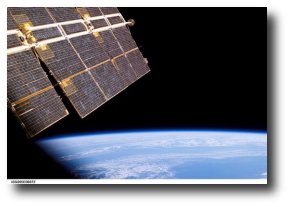 The news that San Francisco-based utility company PG&E, which, as a California investor-owned company is required by the state to source 20 percent of its power from renewable sources by 2010 and 30 percent by 2017, is planning to buy solar space energy, made waves in the media with the expected comments on the sci-fi quality of the announcement. PG&E will buy from Solaren 200 megawatts of clean, renewable power over a 15 year period.
The news that San Francisco-based utility company PG&E, which, as a California investor-owned company is required by the state to source 20 percent of its power from renewable sources by 2010 and 30 percent by 2017, is planning to buy solar space energy, made waves in the media with the expected comments on the sci-fi quality of the announcement. PG&E will buy from Solaren 200 megawatts of clean, renewable power over a 15 year period.
“It’s not quite to the moon and beyond, but PG&E Co. is looking to space for more sources of renewable energy”, quipped Bizjournals.com, while the San Franciso Chronicle informs us that “the idea … appeared in science fiction as far back as 1941 and later received serious study by NASA and the Pentagon. At times, it has been dismissed as fantasy.”
However, this no flight of fancy but a serious attempt at meeting legal obligations. “One advantage of generating power this way is that the satellites would be gathering the sun’s energy constantly, except for brief periods of sun blockage during the spring and fall equinox, PG&E’s filing said. But it noted that the project would require building satellites that are much bigger than the ones now used for communications, which it said could pose an engineering challenge”, wrote Mercury News. Still, “PG&E and partner Solaren, a California start-up, claim that their costs will be comparable to rates for other lines of renewable power. They would not give specifics, added the Christian Science Monitor
And now, the rationale behind the purchase in the company’s own words: “For one, the solar energy available in space is eight-to-ten times greater than on earth. There’s no atmospheric or cloud interference, no loss of sun at night, and no seasons. That means space solar can be a baseload resource, not an intermittent source of power. In addition, real estate in space is still free (if hard to reach). Solaren needs to acquire land only for an energy receiving station. It can locate the station near existing transmission lines, greatly reducing delays that face some renewable power projects sited far from existing facilities. While the concept of space solar power makes sense, making it all work at an affordable cost is a major challenge, which Solaren says it can solve.”





